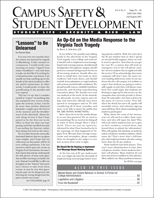The Continuing Controversy Over Whether Student-Athletes Should Be Paid Compensation: Antitrust Courts Weigh in on the Issue
Author: Ralph Gerstein.; Lois Gerstein.
Source: Volume 17, Number 03, Spring 2016 , pp.51-54(4)

< previous article |next article > |return to table of contents
Abstract:
For nearly a century, the NCAA has promulgated rules governing the eligibility of athletes at its more than 1,000 member schools, including the requirement that student athletes be amateurs. In the 1950s, the NCAA began permitting athletic scholarships, but student athletes were otherwise prohibited from receiving any financial assistance in excess of a full grant-in-aid (the cost of tuition, room and board, and course-related books). In 2008, former UCLA basketball player Ed O’Bannon filed a lawsuit for compensation when he discovered that his likeness was being used in a video game without his permission. The game, produced by Electronic Arts, had paid the NCAA for licensed images of college players, including O’Bannon. Other athletes began filing similar suits. This article comprehensively reviews the progress of O’Bannon through federal courts to the Ninth Circuit Court of Appeals, which ruled that increasing the grant-in-aid to cover the full cost of college attendance was an acceptable remedy but that allowing schools to pay students for their NILs was not. The article also analyzes the likelihood that the case will reach the Supreme Court, and the issues the Court will examine should it grant certiorari in O’Bannon.Keywords: O’Bannon v. National Collegiate Athletic Ass’n; NIL (names, images, and likenesses)
Affiliations:
1: Co-Editor; 2: Co-Editor.